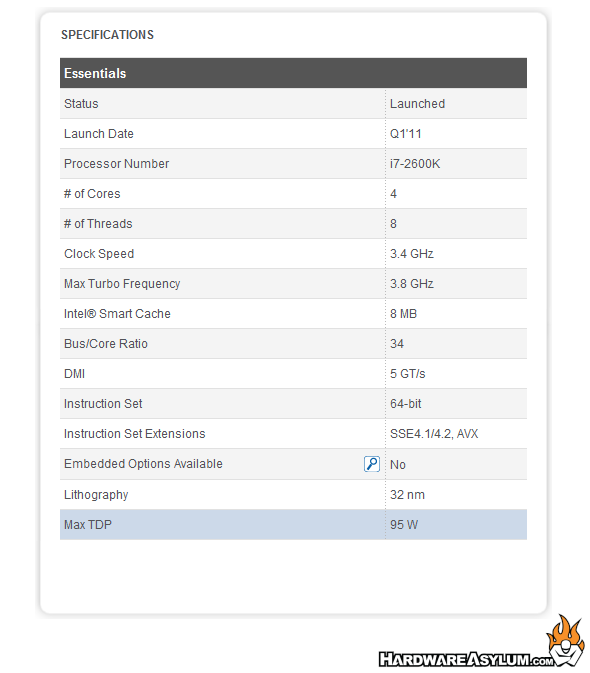beQuiet! Shadow Rock LP Low Profile Heatsink Review
Author: Dennis GarciaBenchmarks
The beQuiet! Shadow Rock LP is compatible with Intel Socket LGA2011 / 1366 / 1156 / 1155 / 775 and current AMD processors. Here is an overview of the system and testing methodology.
Asus P8Z68 Deluxe Gen3 Intel Z68 Chipset
Intel Core i7 2600K (3.5Ghz) Quad Core 4 x 256KB L2 Cache 8MB L3 Cache
bequiet! Shadow Rock LP
Intel OEM Heatsink
The CPUID System Monitor was used to obtain and record system temperature data and being that this is a quad core processor we need something that will work across all of the cores at once. For this task we're using a new version of Prime95 (p95v255a) that will allow you to spawn (n) instances to test with.

Editors note: Even though the Windows 7 task manager reported 100% processor usage we could never attain a 100% of the rated heat output as documented by Intel (see below) when using Prime95 as a basis for that heat production. Knowing this we ran the stress test until the maximum temperature was attainted and stabilized.
Other things to consider when judging software induced heat output.
a) Clock throttling by the processor at high temperatures.
b) Normal software isn't designed to produce maximum heat output.
c) Variances of cooling temperature.
d) Variances in CPU load.
e) Inaccuracies in thermal diode readouts.
Of course the list goes on..
Our testing methodology is aimed to provide a real world look into this heatsink given the test system provided.

C/W = (CPU temp - Ambient temp)/(Variance(%) * CPU Watts)
Allowed variance for this test = 85%
CPU Watts = 95W
0.33 C/W = (51C - 24C)/(.85(95W))
For this next test the CPU speed was cranked up to 4.5Ghz and the test was re-run.

ocC/W = dCPU Watts * (ocMhz / dMhz) * (ocVcore / dVcore)2
ocMhz = 4500
dMhz = 3500
ocVcore = 1.3
dVcore = 1.2
The variance still applies for our C/W calculation
Allowed variance for this test = 85%
CPU Watts = 143W
0.31 C/W = (62C - 24C)/(.85(143W))
In our heatsink and waterblock tests we don't really focus on overall load temperatures but rather how well the product can remove heat given a specified heat load. Since this is a real world testing method we need to take into consideration real world variables and estimate tolerances. This is why we normally only apply 85% of the total wattage output to our heat calculations.
The resulting C/W number is used to rate how efficient a heatsink or waterblock is based on the given heat load. These numbers can be used to determine heat capacity, the larger the difference the less efficient the heatsink is. (aka not good for overclocking)
Here we have a heatsink that can clearly handle what our system can dish out, and then some. All too often we find a rather pronounced variance between the default and overclocked temps which is sometimes good and sometimes bad. For these tests you'll see that the resulting C/W numbers reversed between the default and overclocked states. This normally indicates that we haven’t reached the thermal limit of the cooler and it got more efficient. In this case the Shadow Rock LP was enhanced by the 120mm Silent Wings fan as it was spinning full bore at 1600rpm and was able to handle the 143w load. Given the 130w rating of the Shadow Rock LP I’d say this is a good thing.
It should be noted that we use the Turbo fan profile found in the Asus UEFI to control the CPU fan. This fan profile is an important contributing factor in our testing as it will not only impact the overall overclock but shows us the efficiently of the fan in relation to the heatsink instead of flat out heat dissipation.
Keep in mind these calculations are provided for demonstration purposes only and may not reflect the actual lab tested C/W rating, but we're pretty close.

